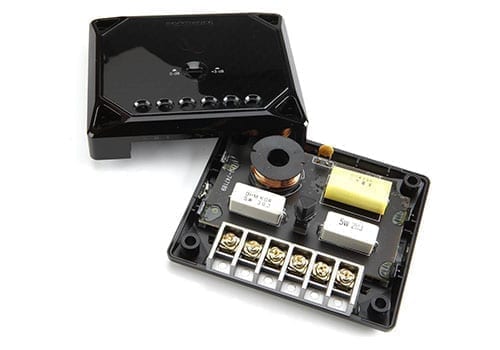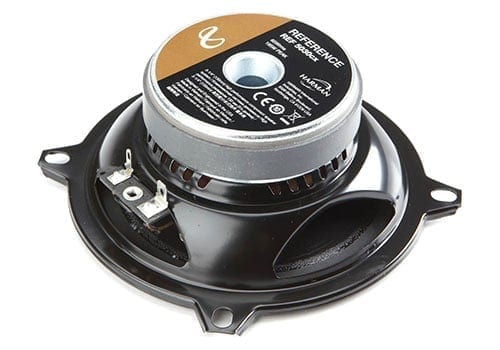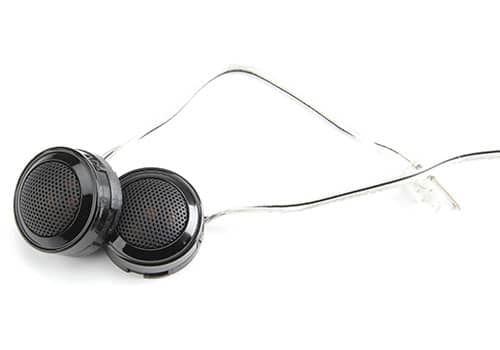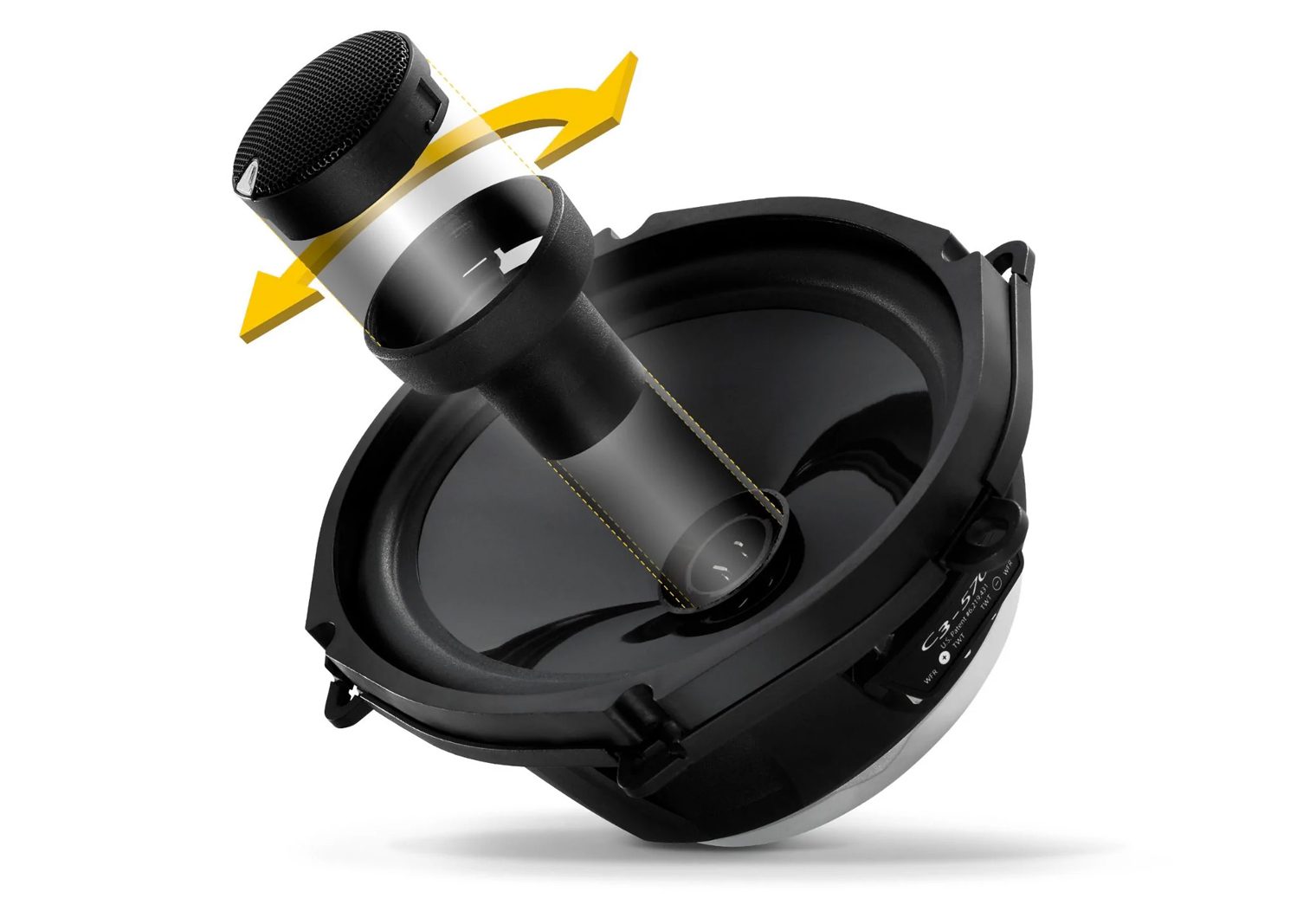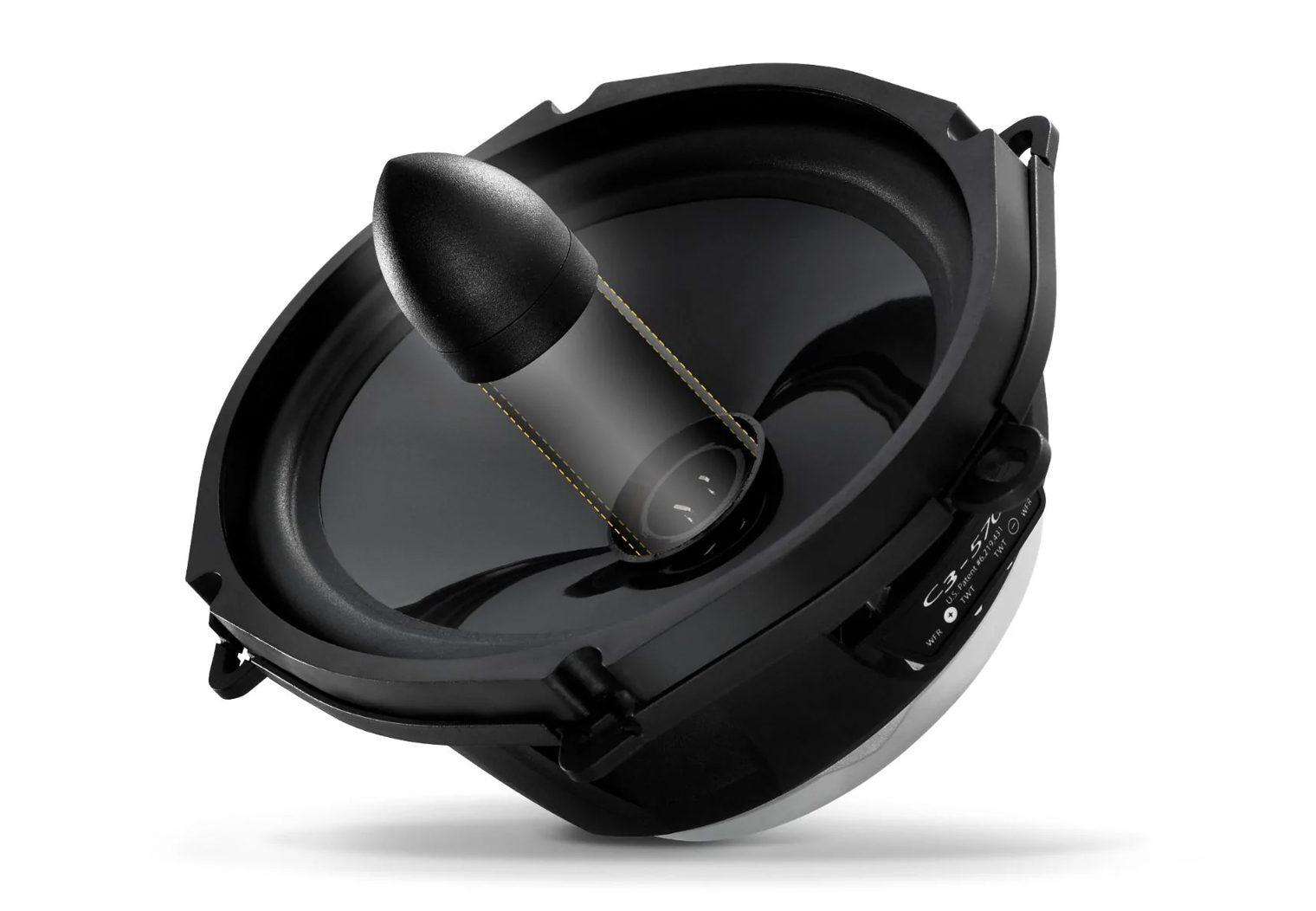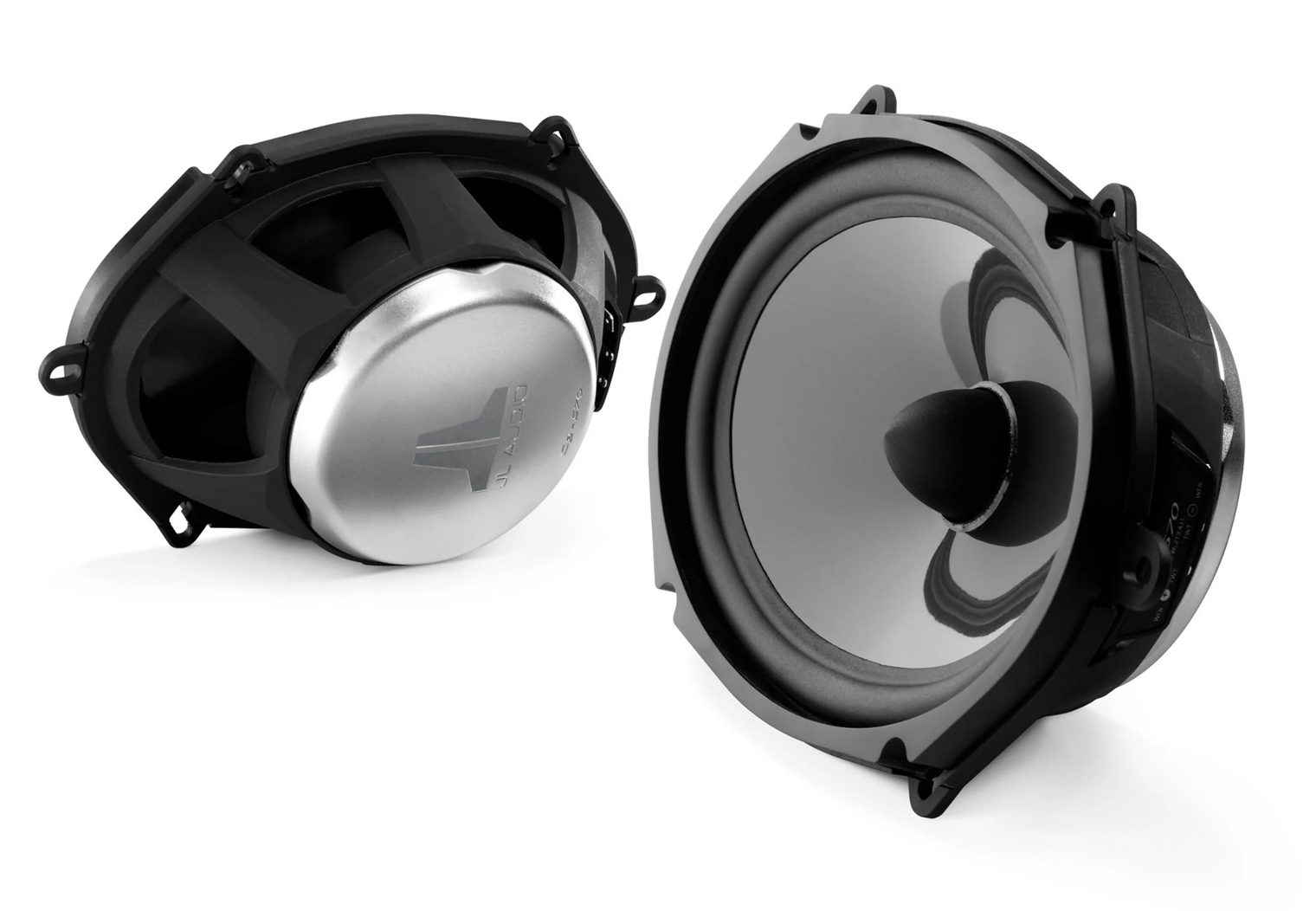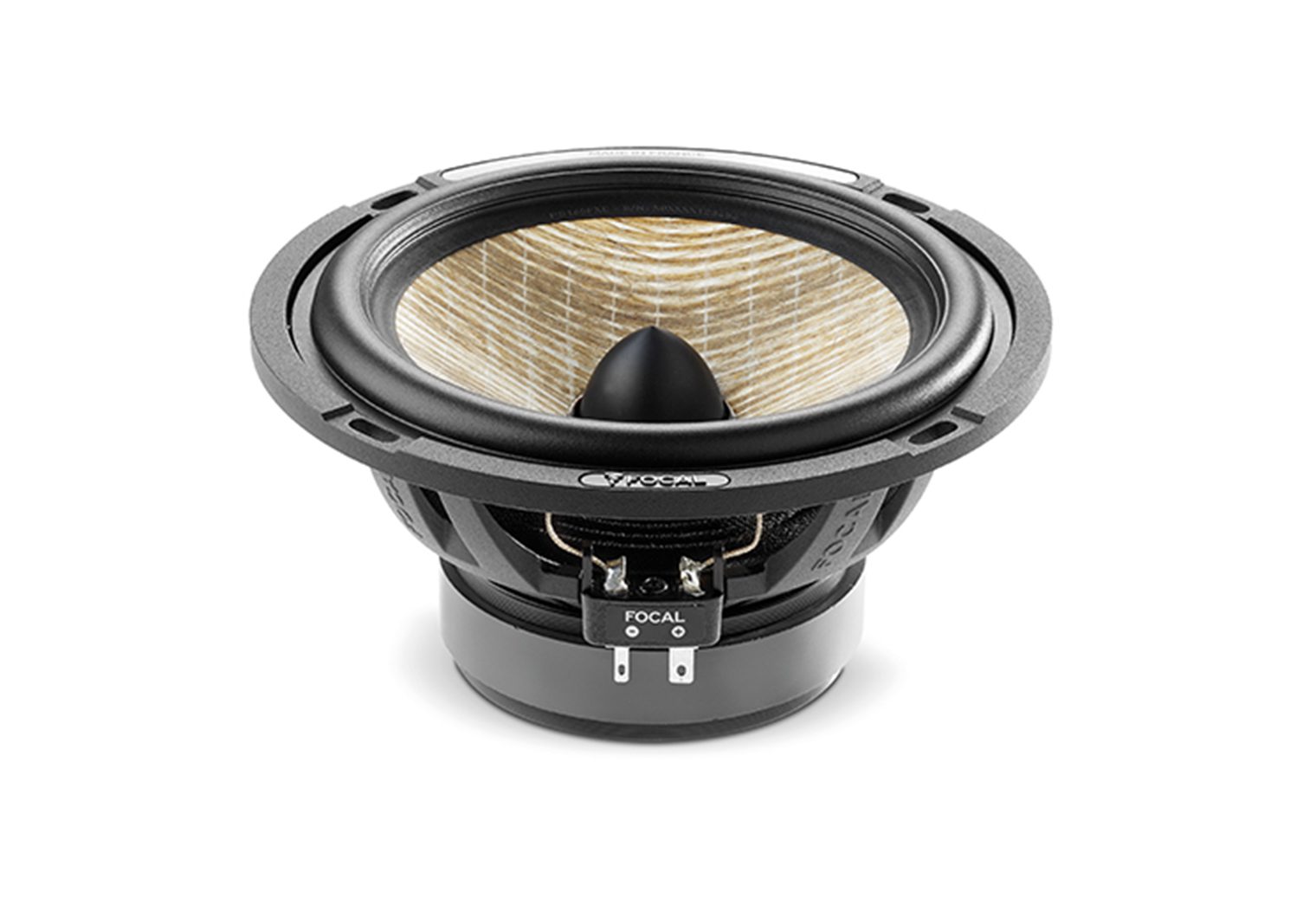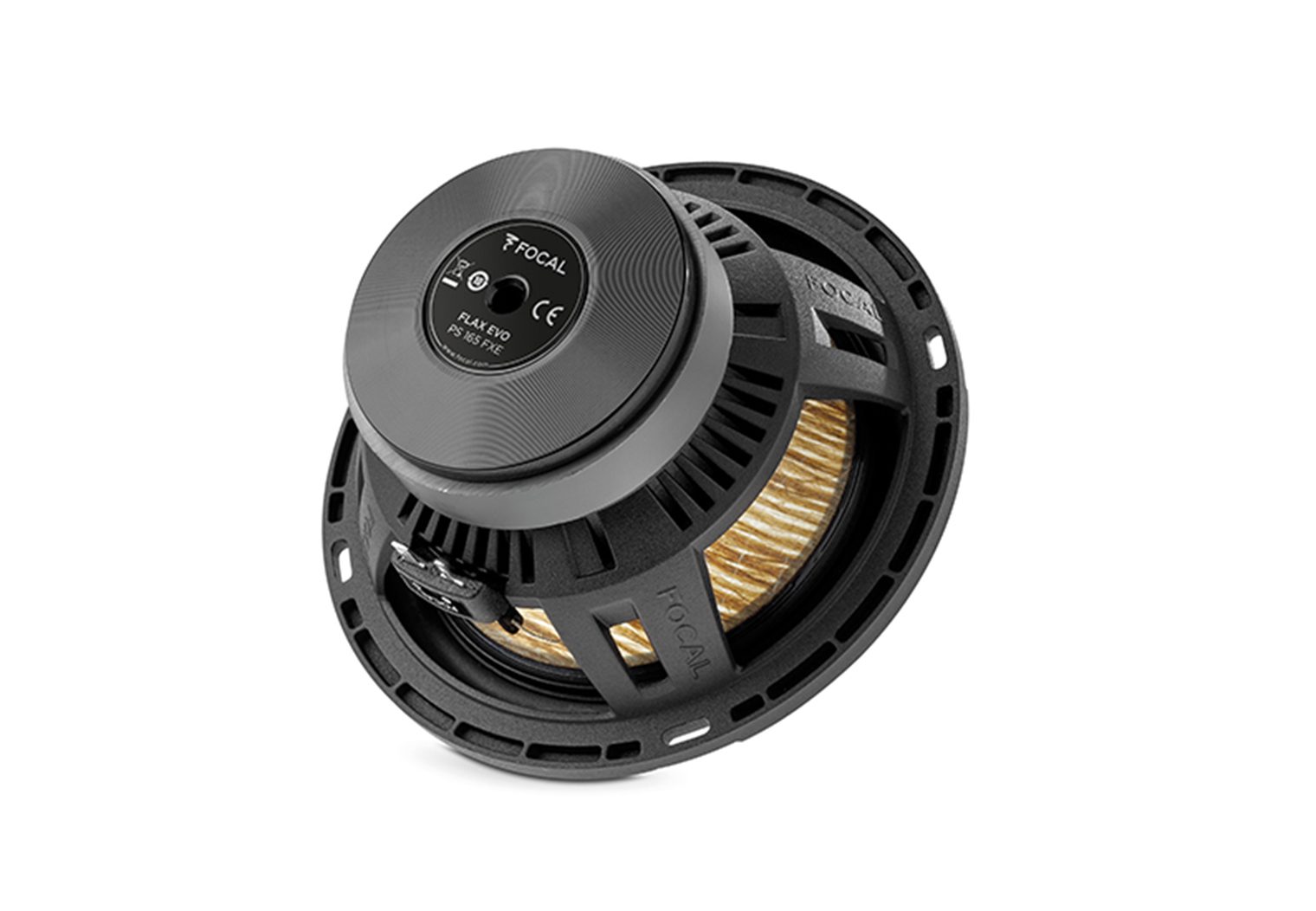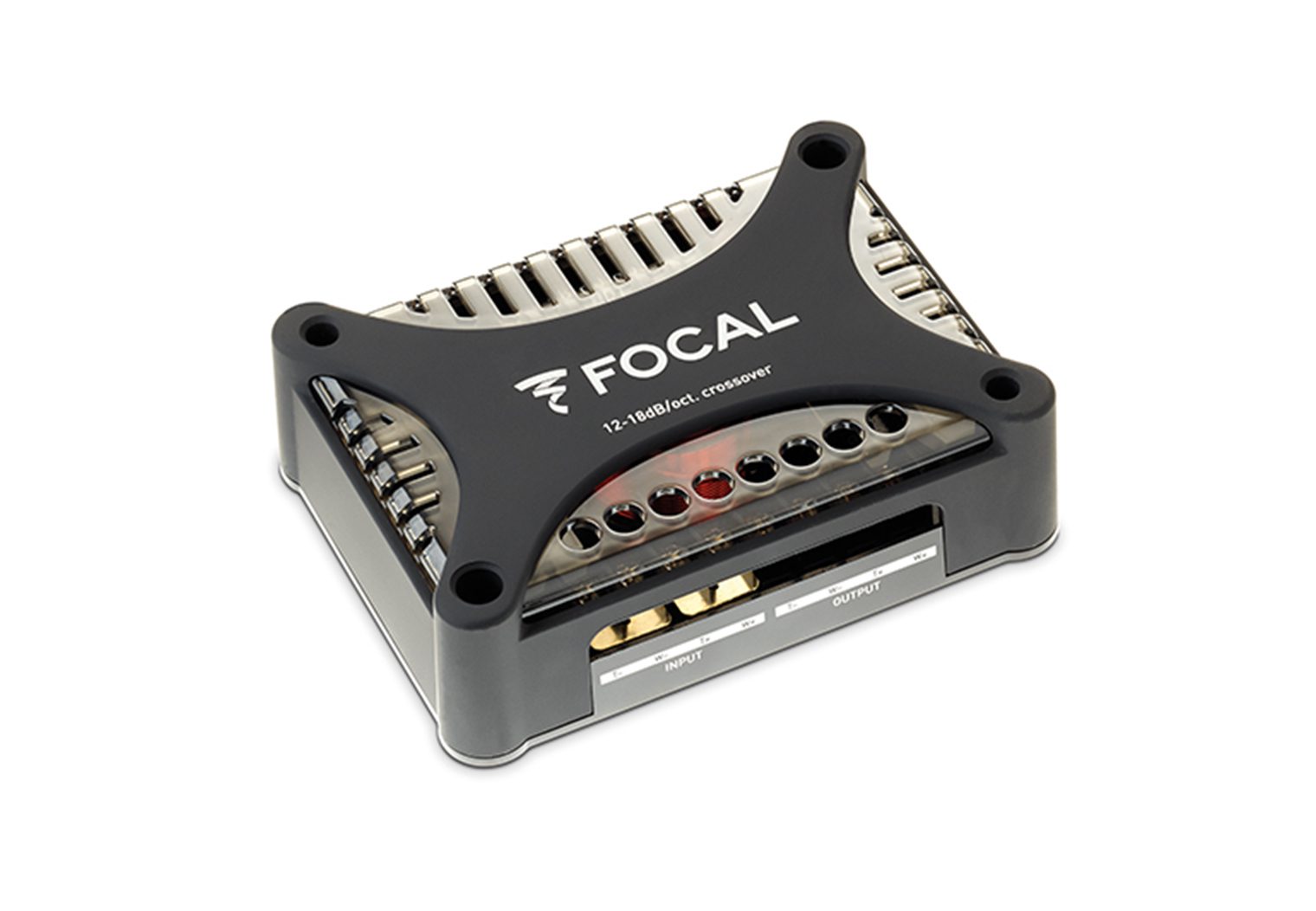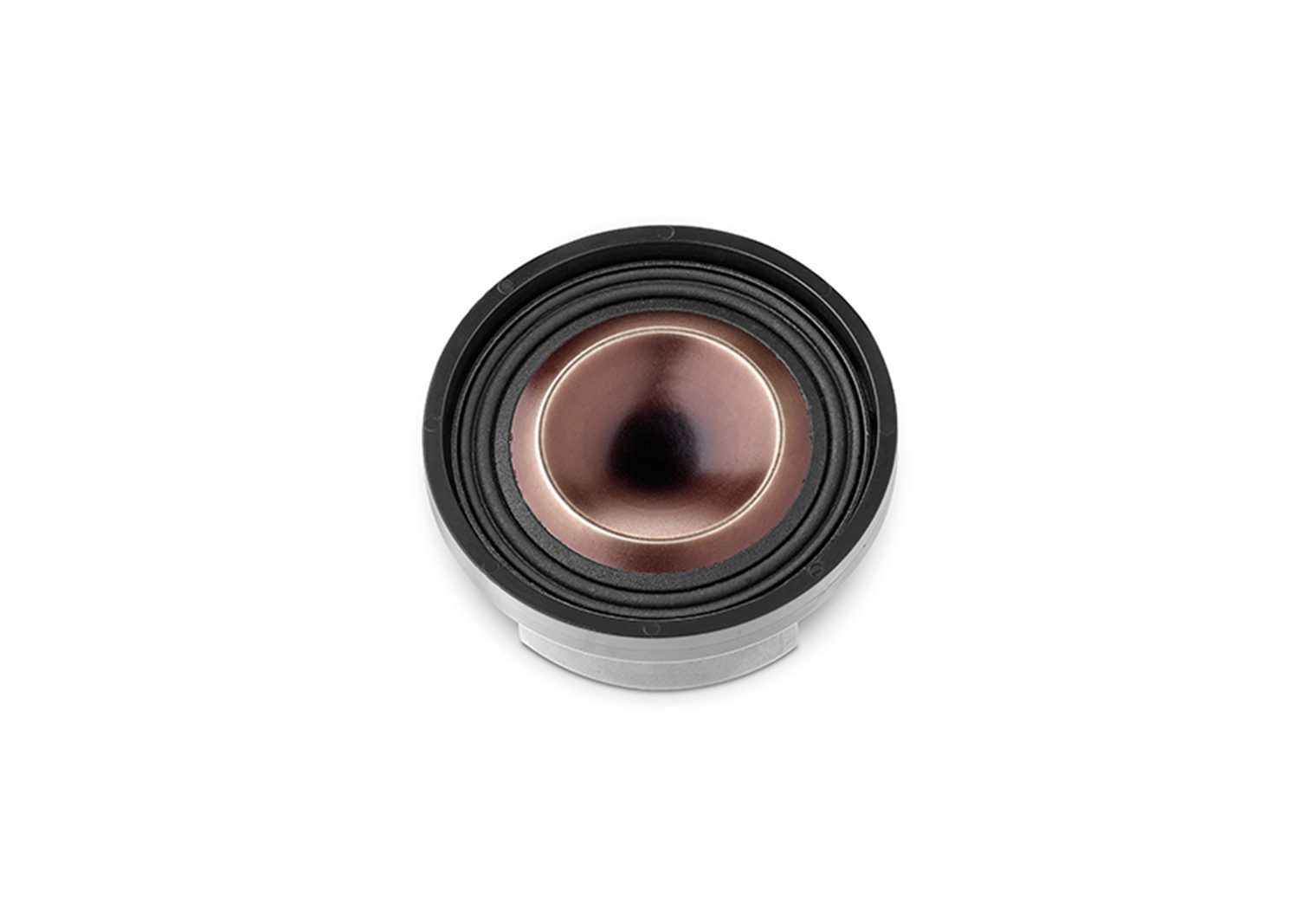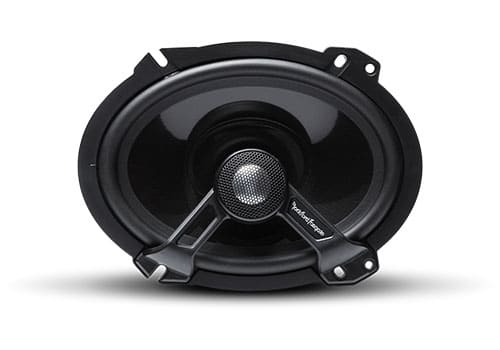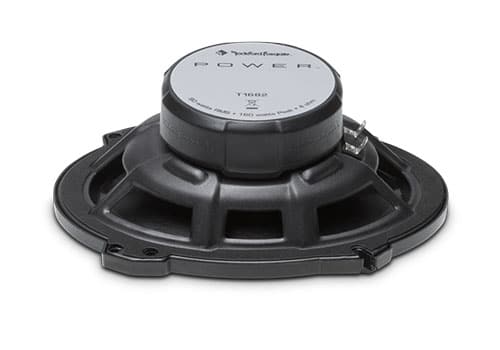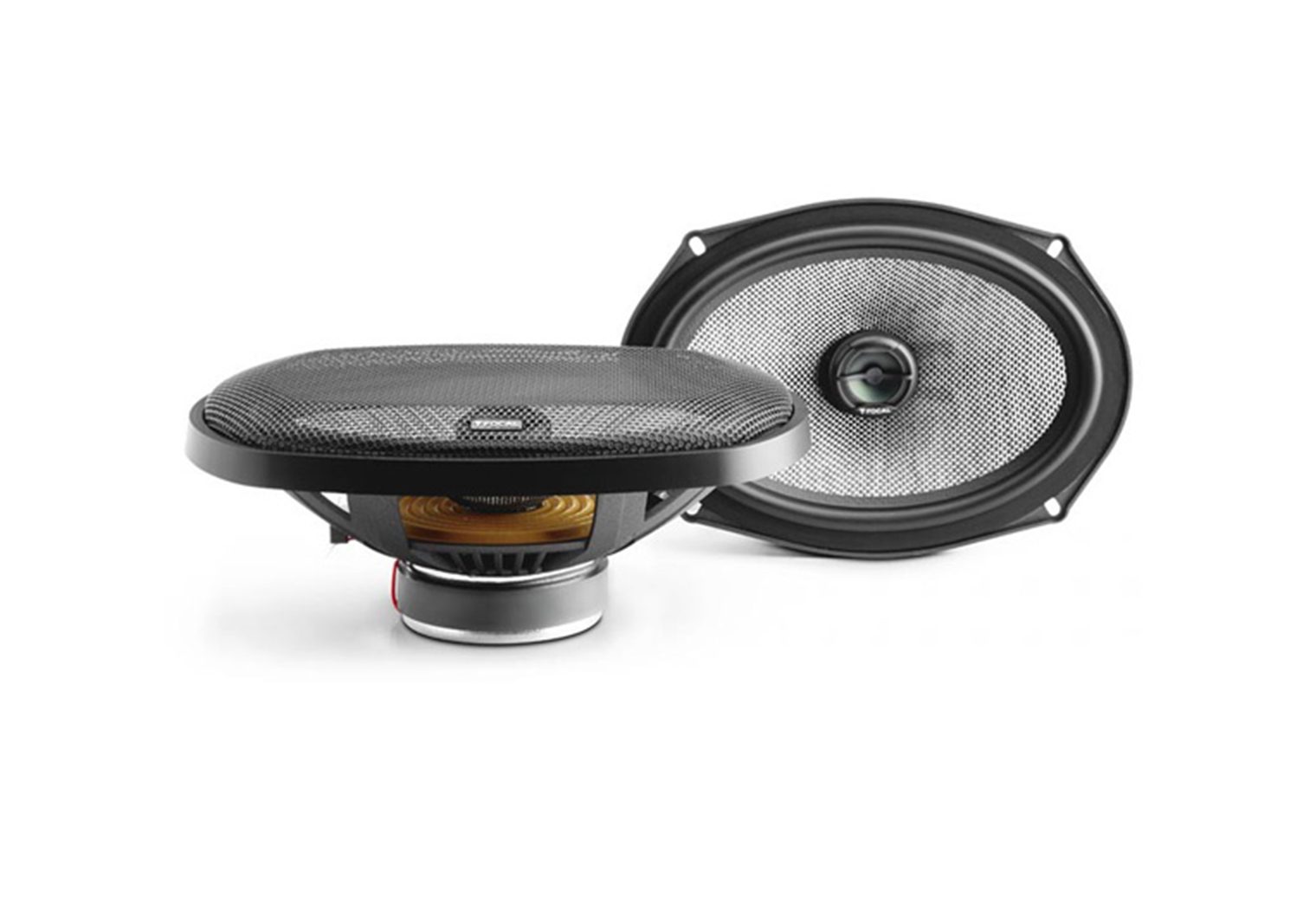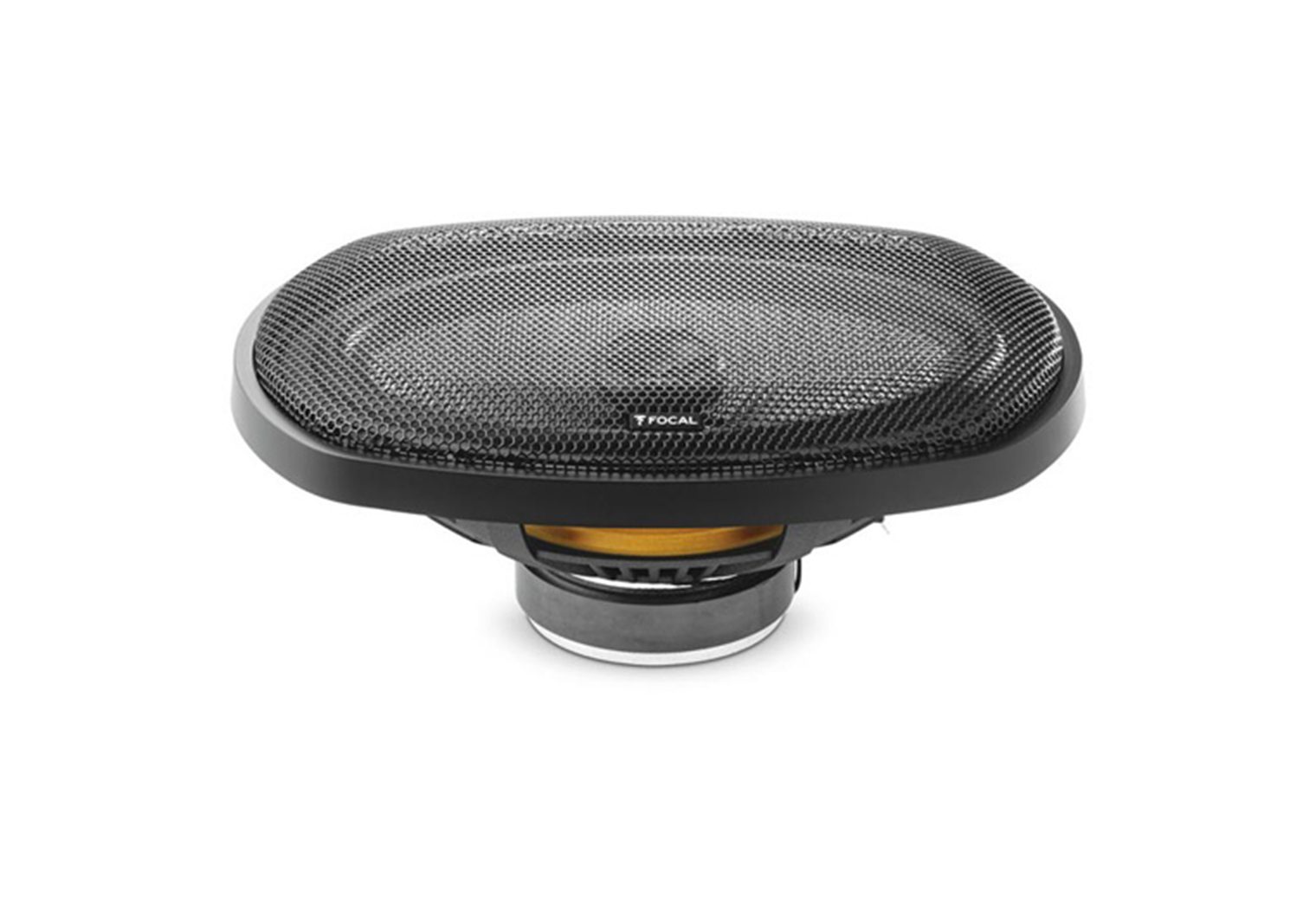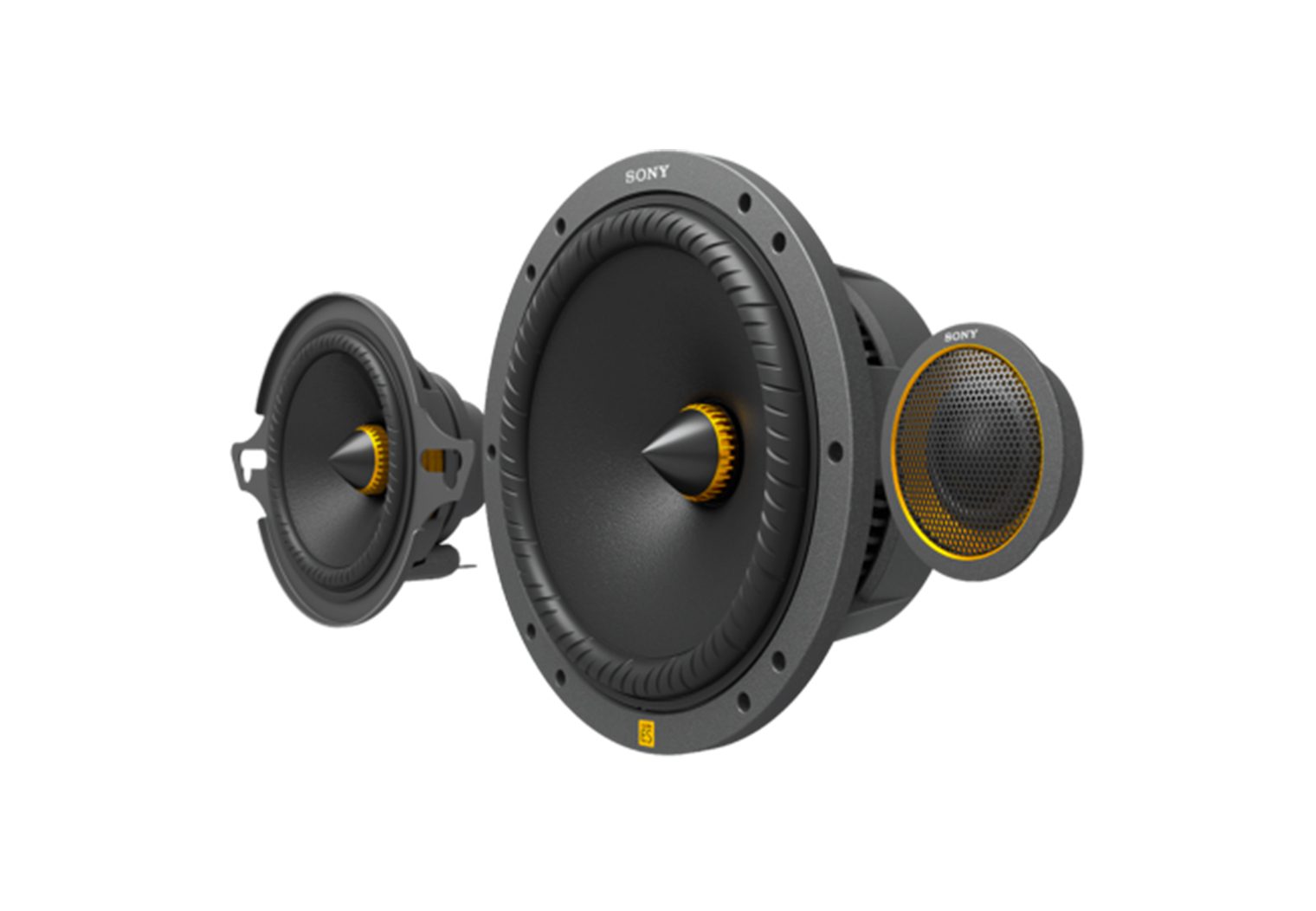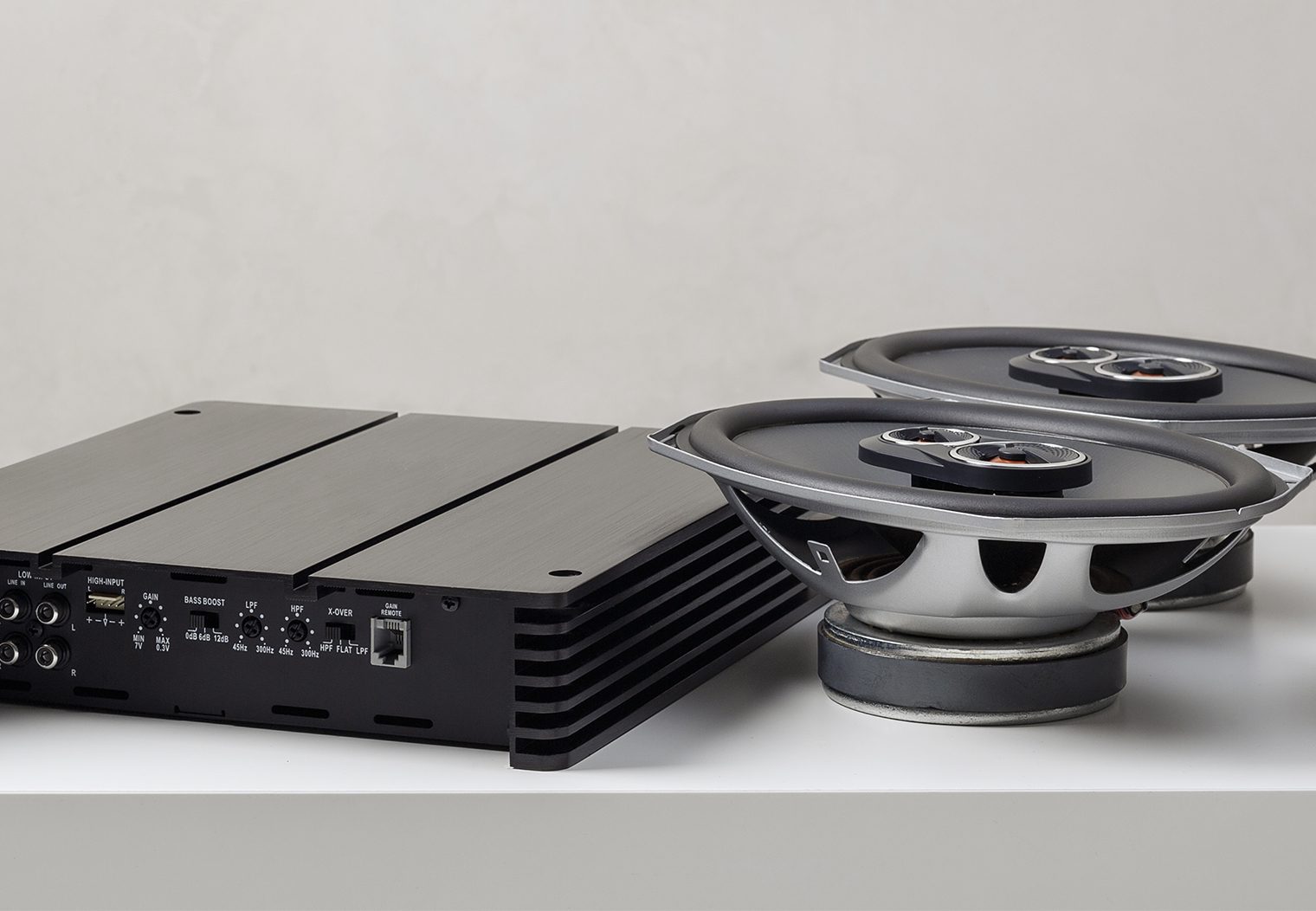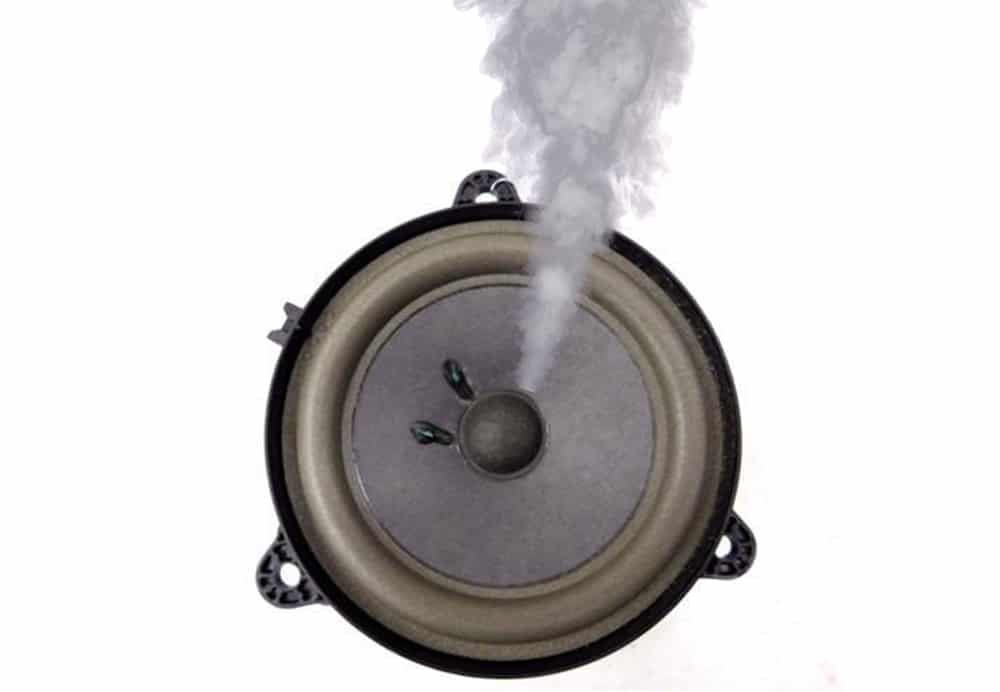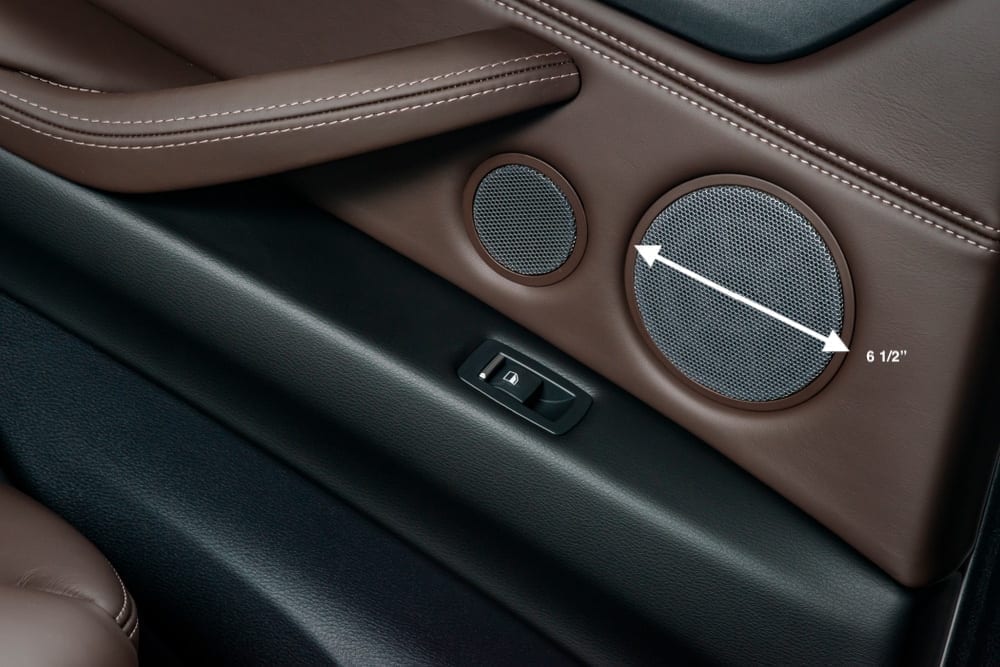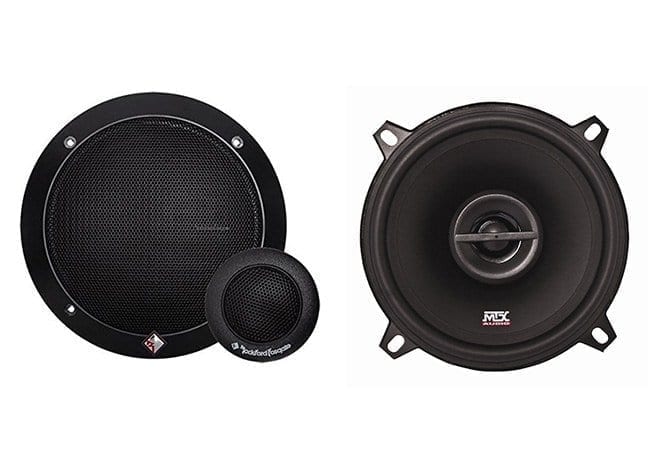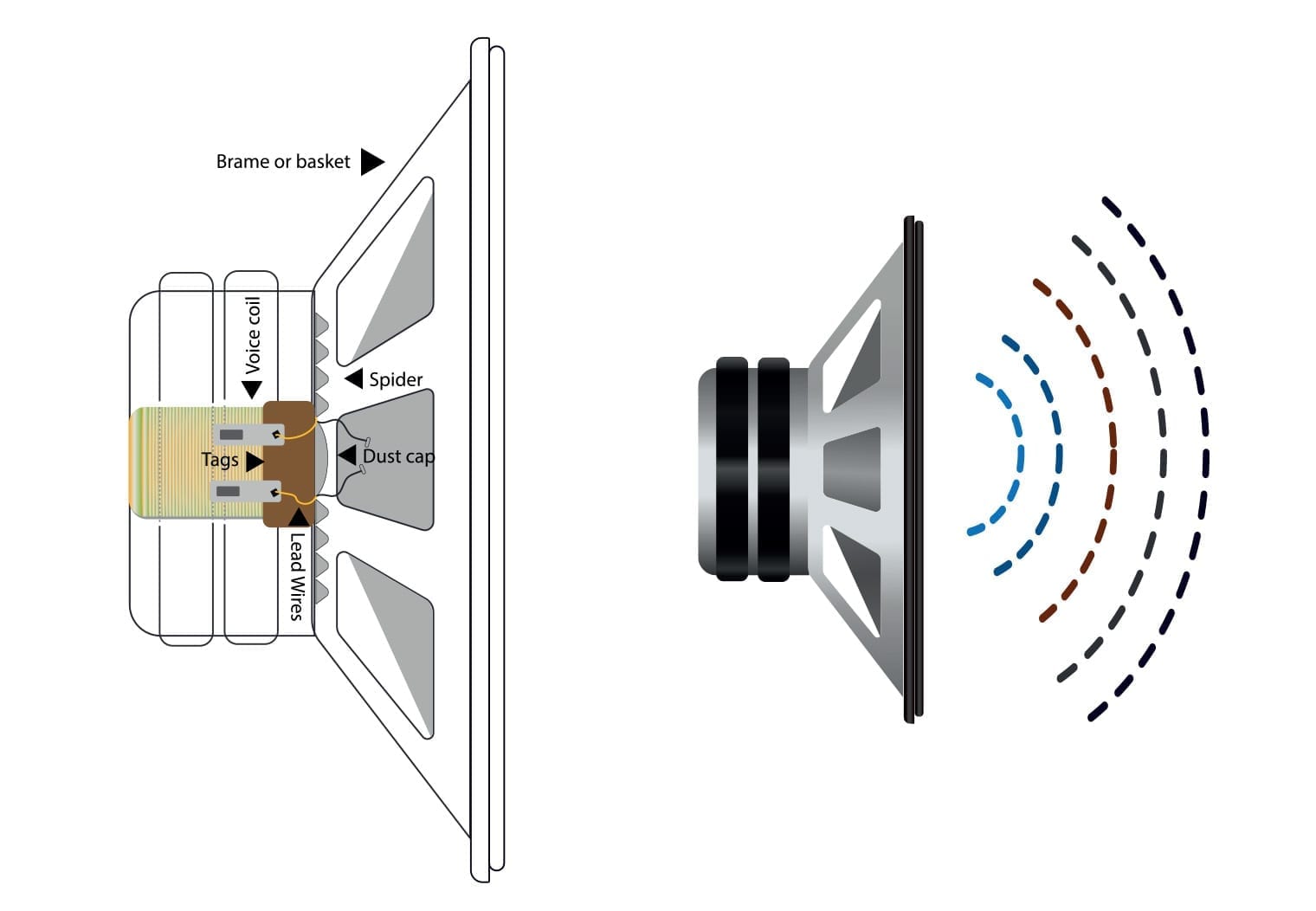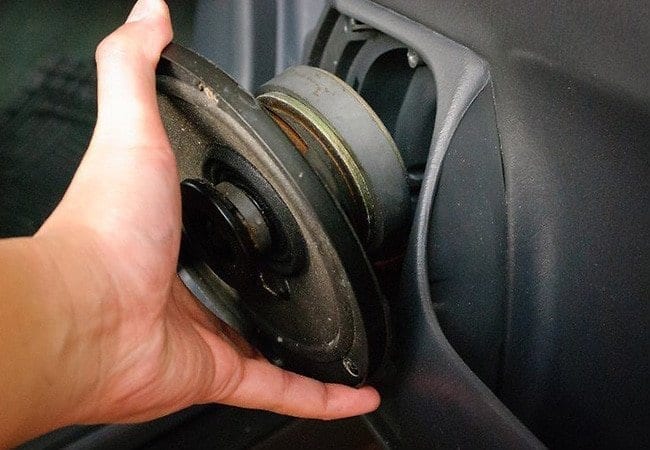Best Car Speakers by Size (Tested) – 2025 Buyer’s Guide
- By: Kameron Scott
- Published: February 6, 2022
- Updated: October 16, 2025
Tested by us
How we evaluate: We install and listen to the same speaker sizes featured here (5.25″, 6.5″, 6×8, 6×9, etc.) in real vehicles and test baffles/enclosures when helpful. Rather than publish lab numbers, we focus on practical criteria that matter day-to-day: fitment, tonal balance, loudness with factory power, and long-term reliability.
- Fit & install: Check mounting depth/OD, adapter ring needs, and tweeter protrusion for factory grilles. Note any trimming or spacer requirements.
- System matching: Listen on factory head units and modest external amps so picks make sense for “no-amp” and “amped” setups.
- Listening tests: Reference tracks across genres (vocals, acoustic, bass-heavy) to judge clarity, midrange presence, bass fullness, and tweeter smoothness at low and high volumes.
- Build & materials: Cone/tweeter materials, surround design, crossover quality, terminals, and included hardware that affects install quality.
- Specs we verify (non-lab): Impedance and power recommendations vs manufacturer documentation to avoid mismatches with common head units/amps.
- Reliability checks: Track community feedback, warranty terms, and known failure patterns we see over time.
Disclosure: Some products are samples; many are purchased. Brands don’t approve our picks, and we return or donate items we don’t keep.
In this article: I break down my updated top car speaker picks by size with quick specs, what I listen for, and how each one performed in my installs and tests. I’ll also link you to deeper reviews and size-specific lists so you can compare alternatives within the same footprint.
There are a ton of “best car speakers” lists out there. What most don’t tell you is why a speaker belongs in your car, how it behaves in a factory opening, or whether it still shines on your car's factory head unit power. That’s why I organize this guide by size—because fitment and goals are everything when you’re swapping speakers.
When readers DM or email me asking “What should I buy?”, I flip the question around first—just like I would at a local shop or during my install days—so we can align on your goals. Before you pick anything, think through a few essentials:
- What’s your goal? Replacing a blown speaker? Chasing more mid-bass or overall volume? Building around an external amp vs running off your factory/aftermarket head unit? Your answer dictates cone materials, sensitivity, and power handling. If you’re adding an amp, match RMS power and impedance accordingly—my amp/speaker pairing guide explains how to do this properly.
- What size actually fits? Size determines 80% of the experience and install effort. Start with my interactive vehicle speaker size list to confirm openings and locations. Adapters can take a 6.5″ into some 6×9″ doors, but the reverse is not a drop-in job.
- What’s the budget? Not everyone wants to spend $350+ on a pair. The picks below are my winners, but you’ll find more affordable options in each linked size list. As a rule, you get what you pay for in motor/cone/tweeter quality and tolerance control.
If you want a deeper primer before you buy, I’ve got a straightforward speaker buying guide and a quick read on component vs coaxial systems. When you’re ready, start with the size you need below.
Here Are My Top Pick Car Speakers Broken Down by Size
Best 5 1/4″ Component Car Speaker
>>> See my full list of 5 1/4″ Component Car Speakers <<<
Infinity Reference 5030cx
We test gear and may earn a commission. Buy now clicks are how we make money and support the time we spend making content. This doesn’t affect our picks.
Why I Picked It
The 5030cx has been my reliable 5.25″ component pick for years because it threads the needle: easy to power on a deck but scales cleanly with an amp. Infinity’s edge-driven textile tweeter keeps cymbals and vocals smooth (no splashy harshness), and the Plus One+ cone gives you a bit more surface area for mid-bass in a small form factor. It’s a great drop-in for factory locations when you can’t step up to a 6.5″, and it’s forgiving to tune if you’re not running DSP.
Specifications:
| Make | Infinity |
| Model | Reference REF-5030cx |
| Size | 5 1/4″ Component |
| Power (RMS) | 65 watts |
| Power (Peak) | 195 watts |
| Frequency Response | 67 – 21,000 Hz |
| Sensitivity | 93 dB |
Reasons to Buy
- Clean, non-fatiguing highs from the edge-driven textile tweeters
- Works well on factory power; really wakes up with ~40–65W RMS
- Durable build (rubber surround, solid motor) for long-term reliability
Reasons Not to Buy
- Limited low-end vs larger sizes—pair with a sub for real bass
- Best dynamics come with an external amp and proper crossover points
- No included grilles for custom or exposed locations
Best 5×7 Car Speaker
>>> See my full list of 5×7 Car Speakers <<<
5x7s are common in Ford/Mazda and a handful of others. They split the difference between a 5.25″ and a 6×9″—nice midrange presence with respectable mid-bass. Often a 6×8″ will also drop into a 5×7″ opening; when that’s true, I typically prefer the 6×8 for cone area and model availability.
JL Audio C3-570
Why I Picked It
JL’s C3 line is clever: run them as a convertible component (separate tweeter + phase plug) or mount the tweeter on the woofer for a coaxial install. The silk dome tweeter is smooth and easy to live with, and the crossover gives you multiple mid/tweeter level options so you can tame dash reflections or brighten a low door position without a DSP. The glass-filled polymer frame with integrated cooling is overbuilt in a good way—these stay composed when you lean on them.
Specifications:
| Make | JL Audio |
| Model | C3-570 |
| Size | 5×7″ Convertible Component / Coaxial |
| Power (RMS) | 75 watts |
| Power (Peak) | 225 watts |
| Frequency Response | 48 – 25,000 Hz |
| Sensitivity | ~90–93 dB (manufacturer/retailer rated) |
Reasons to Buy
- Convertible design simplifies installs and staging
- Multiple mid/tweeter level settings for easy tuning
- Silk dome highs stay smooth at volume
Reasons Not to Buy
- Deeper basket than some factory 5×7″—check depth before ordering
- Pricier than many 5×7″ options
- Benefits from an amp to hit full potential
Best 6 1/2″ Car Speaker
6.5″ is the most common aftermarket size because it balances mid-bass, midrange and imaging, and it adapts easily into many factory locations—even where 6×9″ once lived. I’ve compiled several 6.5″ lists to compare tiers and styles:
- Best 6.5″ Component Car Speakers
- Best 6.5″ Coaxial Car Speakers
- Best Budget 6.5″ Components
- Best High-End 6.5″ Components
Focal PS 165 FXE
Focal PS 165 FXE Video Review
Join us for an exclusive unbox and first look at the Focal PS 165 FXE speakers in our latest video. We'll walk through the key features that make this speaker a great choice.
Why I Picked It
Part of Focal’s Flax Evo line, the PS 165 FXE blends a natural-sounding flax cone with a refined tweeter and robust crossover. It’s a set I’ve covered hands-on in my unbox & first-look review, and it consistently delivers warm, detailed mids without getting sharp up top. If you’re moving from coaxials, this is a “hear it immediately” upgrade when staged and crossed correctly.
Specifications:
| Make | Focal |
| Model | PS 165 FXE |
| Size | 6.5″ Component |
| Power (RMS) | 80 watts |
| Power (Peak) | 160 watts |
| Frequency Response | 55 – 28,000 Hz |
| Sensitivity | ~90.5 dB |
Reasons to Buy
- Warm, natural tonality with excellent vocal detail
- High-quality materials and crossover execution
- Looks as premium as it sounds
Reasons Not to Buy
- Larger cutout than some 6.5″—measure twice before you commit
Best 6×8 Car Speaker
>>> See my full list of 6×8″ Car Speakers <<<
6x8s are a factory staple in many Ford/Lincoln/Mazda vehicles. They usually bring better mid-bass than 5x7s with similar install effort. If you have 5×7″ from the factory, a 6×8″ often fits with the same bolt pattern—just confirm depth.
Rockford Fosgate Power T1682
Why I Picked It
For Ford-family 6×8″ openings, Rockford’s Power series is a proven drop-in with real output. Their VAST surround increases effective cone area for punchier mid-bass than a typical 6×8″, and the integrated crossover/tweeter tuning keeps the install clean. If you want a no-nonsense upgrade that gets loud on moderate power, this is the one I keep coming back to.
Specifications:
| Make | Rockford Fosgate |
| Model | Power T1682 |
| Size | 6×8″ Coaxial |
| Power (RMS) | 80 watts |
| Power (Peak) | 160 watts |
| Frequency Response | 55 – 22,000 Hz |
| Sensitivity | ~88–91 dB (rated) |
Reasons to Buy
- True drop-in for many Ford/Mazda 6×8″ doors
- More cone area (VAST) = stronger mid-bass
- Integrated crossover keeps wiring simple
Reasons Not to Buy
- Not as extended up top as higher-end sets
- Still benefits from sound deadening in thin Ford doors
- As with most 6x8s, sub support helps fill the bottom octave
Best 6×9 Car Speaker
>>> See my full list of 6×9″ Car Speakers <<<
If you want the fullest range from a single driver, a quality 6×9″ is hard to beat. The extra cone area provides real bass presence even without a sub, which is why you’ll see them in Toyota, Jeep, Ram and others from the factory.
Focal Access 690AC
Why I Picked It
DFS cones, butyl surrounds and a rotating aluminum inverted-dome tweeter make the 690AC a tough, musical 6×9″ that plays low without getting muddy. If you’re replacing factory 6x9s and want a noticeable step up in bass and clarity without re-engineering your doors, this is a solid choice.
Specifications:
| Make | Focal |
| Model | Access 690AC |
| Size | 6×9″ Coaxial (2-way) |
| Power (RMS) | 75 watts |
| Power (Peak) | 150 watts |
| Frequency Response | 50 – 20,000 Hz |
| Sensitivity | ~88–91 dB (rated) |
Reasons to Buy
- Authoritative bass for a full-range driver
- Rotating tweeter helps aim highs in tricky doors
- Non-resonant basket and durable cone/surround materials
Reasons Not to Buy
- Taller top-mount depth than some factory 6×9″
- Not as micro-detailed in the mids as higher-tier separates
- Shines most with clean 50–75W RMS per channel
Common Speaker Terms & What Matters (Quick Ref)
Power handling (RMS vs Peak): RMS is the continuous power a speaker can take; Peak is a short burst. Match your amp to RMS—not Peak. My pairing guide walks through gains, impedance and headroom.
Sensitivity: A higher dB rating means the speaker reaches a given volume with less power. Great for factory-power installs, but remember tuning and enclosure (your door) matter as much as the number on the box.
Frequency response: The range a speaker can reproduce. Spec sheets don’t tell you how flat it is, but they give clues—e.g., a lower bottom end hints at stronger mid-bass potential.
Materials & build: Poly blends, fiberglass, carbon fiber and flax each trade weight and rigidity differently. Rubber surrounds last longer than foam. Better baskets and motor venting help control heat and distortion at volume.
Need installation help? Check my step-by-step on installing car speakers and the overall stereo upgrade roadmap.
FAQs
Can I put a 6.5″ into a 6×9″ opening? With a quality adapter and deadening, yes. You’ll often gain imaging and mid detail with components, but you’ll lose some native bass vs a 6×9″ cone.
Do I need an amp? You’ll hear a difference either way, but every speaker on this page improves noticeably with 40–75W RMS and proper crossover points. If you can swing it, add a small 4-channel amplifier.
5×7″ vs 6×8″—which should I choose? If both fit, I generally lean 6×8″ for slightly more cone area and broader model selection.
Other Articles We Think You Should Review About Car Speakers
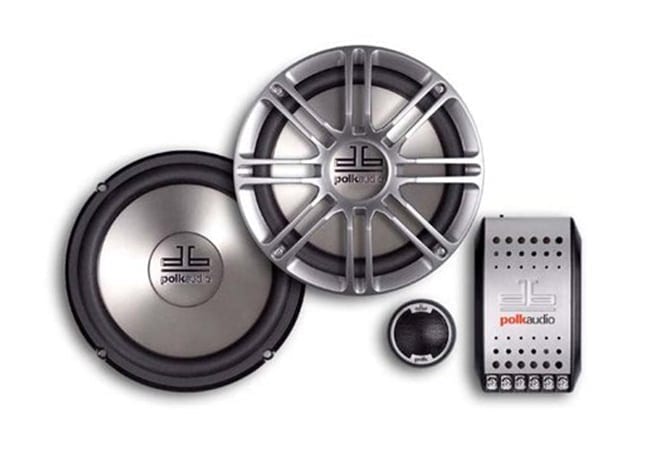
Why Trust Our Opinion on Car Speakers?
CarAudioNow is an award winning automotive blog, founded and built from the ground up by car enthusiasts over a decade ago. Between our editor, Kameron, and a few selected qualified writers, we’ve installed and tested a wide variety of speakers in cars, boats, golf carts – you name it. We know our speakers, how they should sound and perform and what’s a good value for your dollar. We get our hands on every product that we test in person – many of which are purchased and some provided by a manufacturer. It’s a combination of these tests and extensive research that lead us to our recommendations. And we’re frequently testing new speakers for our lists.
CarAudioNow and its writers don’t use AI to throw regurgitated information about a few car speakers on a list and say they’re “the best” either. We’re focused on providing meaningful lists, with accurate and useful information that will help you make an informed decision on a product. And we do this because we genuinely enjoy or highly regard the stuff we add to our lists. Our readers and our reputation are both more important to us than a quick buck or the top rank on Google – although both of those would be nice! Read more about how we choose our top lists here.


